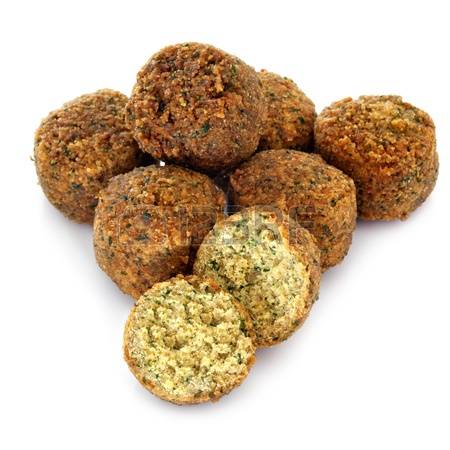 Originally an Arab food, Felafel (in pita, with salad and toppings) has become synonymous with Israel, as a widely popular street food or fast-food. The Baal Shem Tov taught that there can and should be a spiritual life message in everything, and felafel is no different!
Originally an Arab food, Felafel (in pita, with salad and toppings) has become synonymous with Israel, as a widely popular street food or fast-food. The Baal Shem Tov taught that there can and should be a spiritual life message in everything, and felafel is no different!
(1) Like a Mitzvah (Jewish observance or good deed) it’s ideal to have Felafel balls in its natural, supportive environment, of pita, Israel salad, and other toppings of choice. A Felafel ball alone, is kind of like a fish out of water. But as the Rebbe teaches about Mitzvot, each Mitzvah has its own worth and value and can stand alone on its own merit, even without the rest of the observances.
(2) More on that value of that supportive atmosphere and setting: Chickpeas have to be crushed and ground to make a Felafel Ball. Like the saying: you have to crack a couple of eggs to make an omelet. But, like a seed that needs to fall apart in a supportive atmosphere (soil) for a plant to grow, our chickpeas can’t just be mushed up and left there. Crushed and ground up alone won’t make a felafel.
(3) Chumus (the beloved spread) is also made from chickpeas, but in Chumus they are flattened and smooth (although there are chunky Chumus varieties) to be a spread. Felafel on the other hand, which is also crushed chickpeas, is formed into individual balls, their own units, that stand up even when sandwiched into a pita with lots of veggies. The key difference? Falafel balls are fried, firmed and toughened up by facing the hot oil. Life’s challenges can be fortifying and character building, they shape our lives.
(4) Sometimes the dreaded thing happens, even to the best falafels. You fill your Pita up, with the felafel balls and all the veggies and toppings you like, and that obligatory tehina sauce oozing inside, and just after the second or third bite in, the pita develops a small but growing crack towards the bottom and before you know it the contents of that pita end up all over your plate. What do you do? Do you toss it out and make another one? Throw your hands up and walk away? No! Most people won’t. They’ll just grab a fork and pick up the pieces. Like a good Felafel, life can be hard to hold it all together. But no fear! Don’t let “falling pieces” and drips and tears ruin your experience. Make the most of it, regardless of how the pita or life comes together.
this add-on by Rabbi SB Hendel:
(5) It’s much more rare for Israeli pitas to suffer the same consequences as described in #4. They seem to hold it better together. It may be because its second nature to Israelis, but it also may have something to do with the freshness and therefore pliability of the pitas. Many or moist American restaurants or fast-food places will use recently baked or frozen pita breads. This may cause it too harden slightly and be more likely to form a crack as the pita opens and closes and is filled inside. But a good self-respecting Israeli pita stand will never use old pitas! A fresh same-day pita will be much more pliable and accommodating, forgiving of the bends and turns and twists of a filled-up falafel. The life message? This teaches us the power of flexibility! It affords a filled falafel, interpersonal relationships and the fullness of life a better chance at sustainability and longevity.
